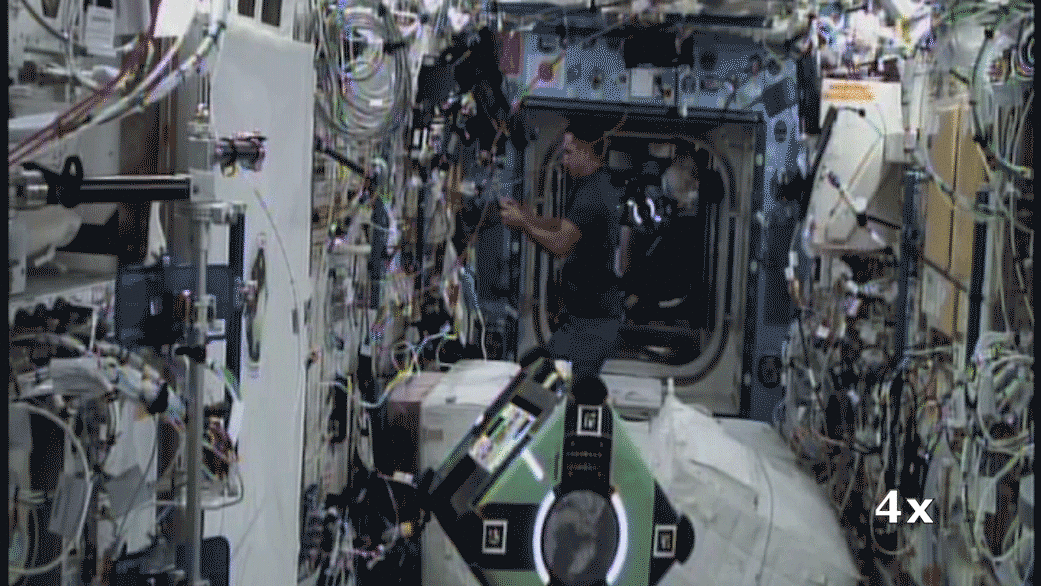Humans won’t trek alone in future crewed missions to deep space. Robots are a central part of NASA’s plan for operating and maintaining spacecraft as humans return to the Moon, explore Mars, and venture beyond.
Seen here, two Astrobee free-flying robots – Queen in front and Bumble in the back – work alongside astronauts Raja Chari (closest to camera) and Matthias Maurer aboard the International Space Station. In past experiments, the robots have operated one at a time or have needed more hands-on support from their human colleagues. This video shows the first time that two Astrobees worked independently, side by side with humans, in separate modules of the station. Bumble tested its navigation ability in the Harmony module and gathered new station mapping data, while Queen captured its first 360-degree panoramic image of the interior of the orbital laboratory.
The mapping and imaging experiments are part of the Integrated System for Autonomous and Adaptive Caretaking (ISAAC) project, managed at NASA’s Ames Research Center in California’s Silicon Valley. The project uses the Astrobee system, a set of three cube-shaped robots plus a docking station designed and built at Ames. The Astrobees, which first launched to the space station in 2018, can operate fully autonomously or under remote control by astronauts or ground operators.
ISAAC researchers have been teaching the Astrobees to autonomously support spacecraft monitoring, maintenance, and other tasks. In addition to making spaceflight safer and more cost effective, robotic assistants like the Astrobees could manage routine chores to free up humans for more complex work. Furthermore, future spacecraft like the Gateway space station won’t be crewed year-round, and will need smart, self-run robots to keep an eye on things while humans are away.
The ISAAC project closed the current phase of its mission this month, but there’s much more in store for the Astrobees. Follow NASA Ames on Twitter for more updates about these industrious robots.
Astrobee was funded by the Game Changing Development (GCD) program within NASA’s Space Technology Mission Directorate and the Artemis Campaign Development Division, part of the Exploration Systems Development Mission Directorate. ISAAC is also funded by GCD. NASA’s Johnson Space Center has developed technologies for Astrobee and runs some of its research programs.






























